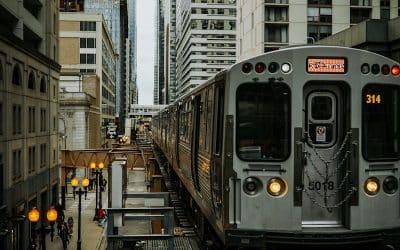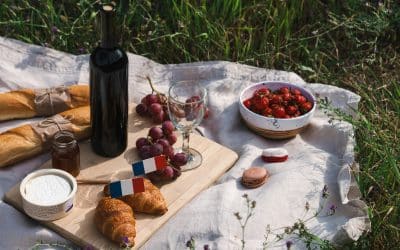Africa, the world’s second-largest continent, has magnificent places to visit. With its amazing wildlife and expansive landscapes its best for safari lovers and photographers. There’s a lot to see and experience cultural, educational, etc. Choosing these places wasn’t an easy task since there are a lot of amazing places with unique features and beauty.
Here are 9 of the most amazing places and safest places to visit in Africa:
1. Serengeti National Park In Tanzania
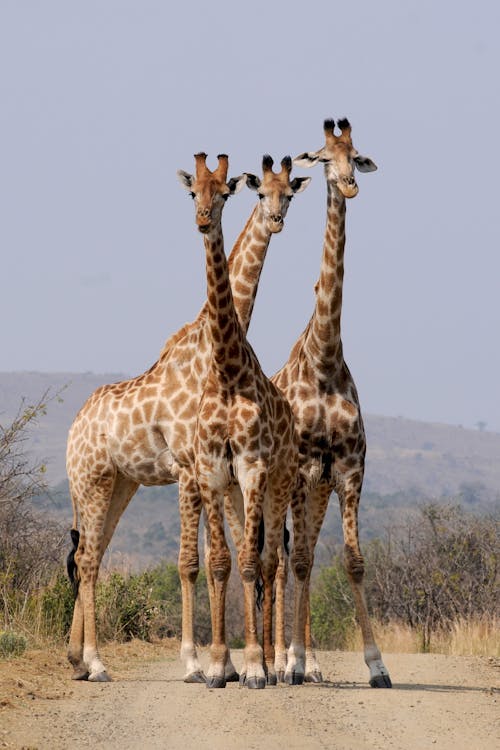
3 giraffes in the serengeti national park
The Serengeti National Park is located in best countries to visit in Africa, Tanzania. One of the most famous national parks in Africa. It is home to the greatest wildlife spectacle in the world.
The Serengeti National Park eco-system is the oldest on the planet and also is home to one of the world’s seven natural wonders. Serengeti is famous for the world’s largest movement of animals also known as the great wildebeest migration.
The great wildebeest migration usually is when 1.5 million wildebeest and thousands of zebra and gazelle, move each year around the same time from southern Serengeti in Tanzania and loops in a clockwise direction towards the Masai Mara reserve in Kenya.
This migration is a natural phenomenon determined by the availability of grazing. During this migration about 250,000 wildebeest die during the journey from Serengeti (Tanzania) to the Maasai Mara ( Kenya). The cause of death is usually from thirst, hunger, and exhaustion.

Elephants in the Serengeti National Park
You can visit the park all year round. The best time to visit is during the dry season (from late June to September) this time you can get the best wildlife viewing, in general.
The timing of migration varies every year. The best chance of seeing it is during June and July. There’s a variety of accommodation available in Serengeti Park from luxury lodges to mobile camps.
There are a lot of things to see and do in Serengeti National Park such as the Balloon Safari, the Retina Hippo pool, visiting Maasai Village, and many more. The park covers 5,700 sq miles, (14,763 sq km), it’s larger than Delaware and Rhode Island combined.
Also see where do hippos live
2. Victoria Falls- Zambia/Zimbabwe
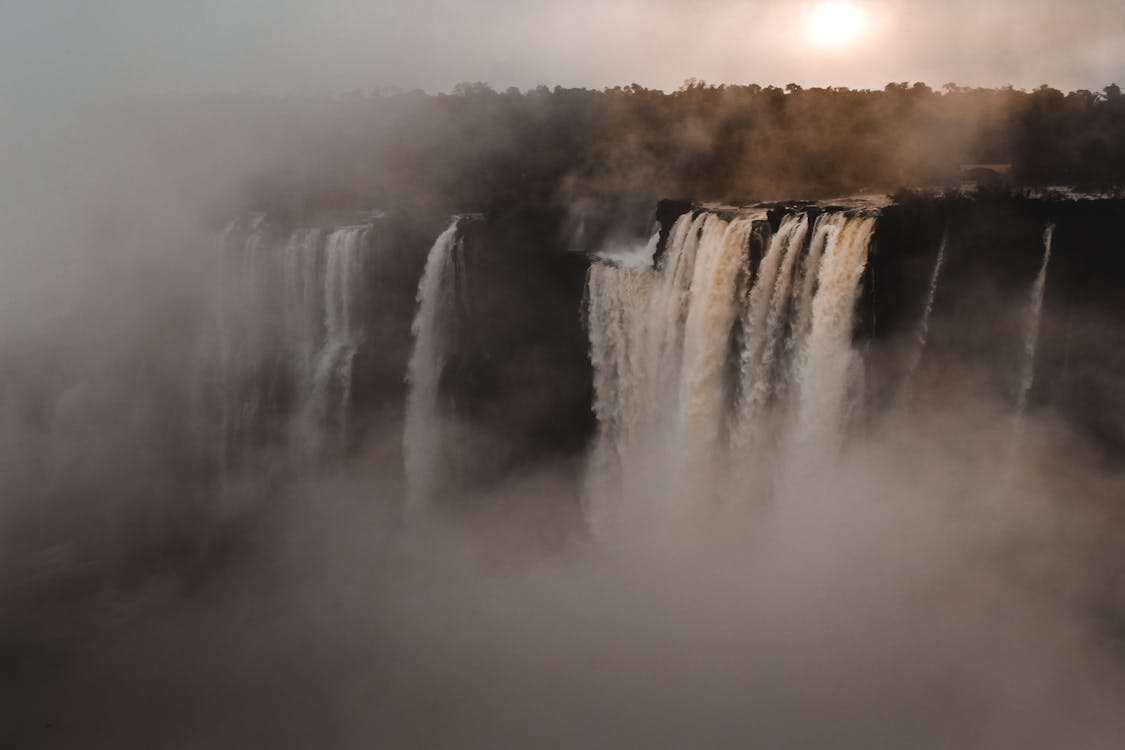
The Victoria Falls
Victoria Falls is a waterfall in the Zambezi River at the border between Zambia and Zimbabwe. It’s one of the Seven Natural Wonders of the World, it’s neither the highest nor the widest waterfall in the world, it is classified as the largest, based on its width of 1,708 meters (5,604 ft) and height of 108 meters (354 ft), resulting in the world’s largest sheet of falling water.
You can get onto Victoria Falls through Victoria Falls National Park which is on the Zimbabwe side or the Mosi-Oa-Tunya National Park which is on the Zambia side, which means that for you to see the entire length of the largest waterfall in the world, you will need to have access of these two countries.
So if you choose to visit one country let’s say Zimbabwe you will only see some part of the waterfall and you are going to miss the other part which is on the Zambia side.
Most people will generally choose the entrance based on their port of entry, meaning the entrance will be based on the country they are staying in. The two entrance gates are close to the border and they are connected, with the Victoria Falls bridge.
Victoria Falls Bridge is another attraction, it crosses the Zambezi River just below Victoria Falls. It has a total length of 198 meters(650ft).
There are some guided tours focusing on the construction of the Bridge, which include a walking tour under the main deck. Also on the Zambian side, there is a small museum about the Bridge which is free to enter, and has a cafe selling refreshments. You can buy some souvenirs while you are there.
Also located on the bridge is the Shearwater 111 meter (364 ft) bungee jump including a bungee swing and zip-line. There is also a railway museum in the city of Livingstone which is in Zambia. There are several old steam trains and this is a good source of information for railway enthusiasts.
The best time to visit the waterfalls depends on your preference. You can choose a high water season that is around March-May.
During this season there are hot days and warm nights with thunderstorms. When it comes to activities is a little dangerous since the water level is too high.
Activities such as white water rafting or swimming at the Devil’s Pool are not recommended. Another option you can choose is to go on low water season which is September-December.
The Low Water Season is a fantastic time to photograph Victoria Falls, as the cliff face is most exposed and this spectacular geographical formation is revealed for all to see. While the rainforest isn’t so rainy, the site itself is a lot less crowded, the skies are always clear, and the sun shines all day.
3. Spitzkoppe- Namibia
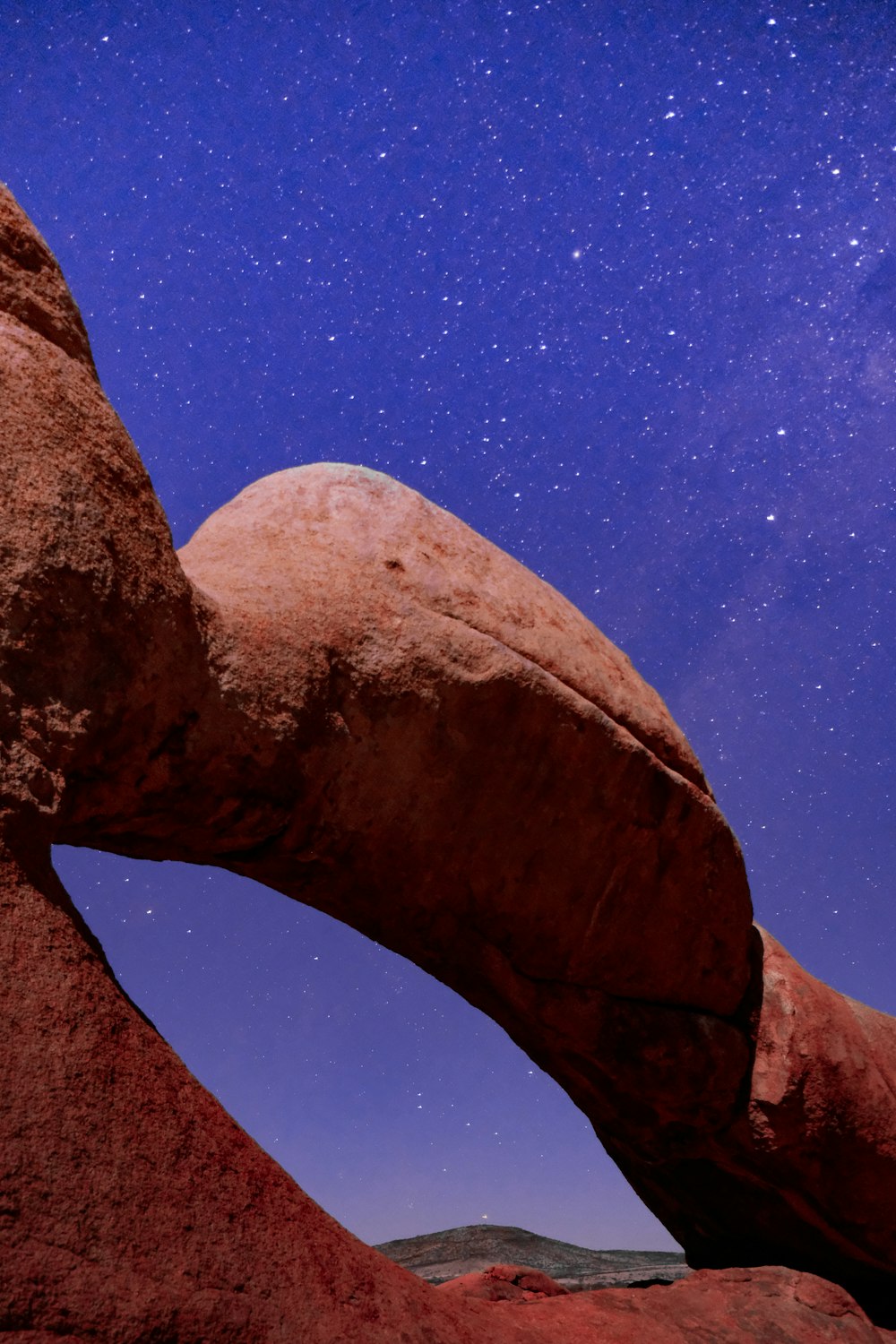
Bald granite peaks of Spitzkoppe, Namibia
The Spitzkoppe is a group of bald granite peaks located between Usakos and Swakopmund in the Namib desert, Namibia.
The Spitzkoppe has two separate mountains, the large Spitzkoppe which is 1728 meters high (5669 ft), and the small Spitzkoppe which is 1584 meters high(5196 ft).
These are the most photographed mountains in Namibia. The area has a long history of habitation. Also, the caves and rocks have numerous well-preserved examples of bushmen rock art to view.
The Spitzkoppe area is good for hikers’ and rock climbers’ and has a nice view from the top. For those visitors who are interested to learn about this place, there are organized guided walk tours that are available.
There are knowledgeable, friendly guides who will take you to view some of the numerous rock art sites, explaining the stories captured in the ancient drawings.
The area also has a restaurant and bar, on the foot of the sprawling granite formation, there is a wonderfully maintained campsite where you can pitch a tent and stay for the night.
The campsite also has some special barbeque places consisting of several secluded camping sites all of which have braai facilities.
If you are an outdoor activities lover, by visiting Spitzkoppe you will enjoy hiking, rock climbing, magnificent views, and wonderful photographic opportunities.
4. Majorelle Garden In Morocco
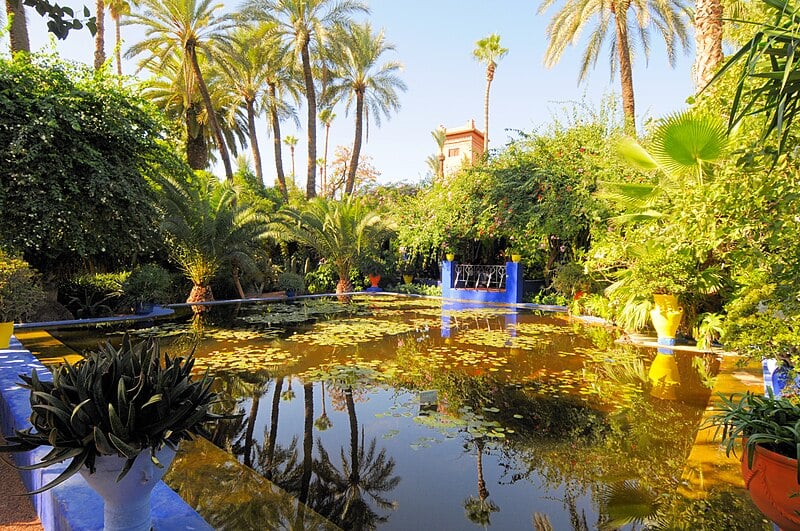
Majorelle Garden also is known as the Jardin Majorelle in Marrakech, one of the most visited sites in Marrakech, Morocco.
It was created and designed by French painter Jacques Majorelle, who took him almost forty years of passion and dedication to create this enchanting garden.
He started this in 1923 but was opened to the public in 1947. Jacques Majorelle resided in the garden until his divorce in the 1950s. In the 1980s Yves Saint-Laurent and Pierre Bergè purchased the property, he owned the property until his death in 2008.
The garden covers nearly two and a half acres. There are collections of cacti, exotic plants, and trees that are landscaped to emphasize each one’s unique beauty.
Another attraction is a Cubist Villa which was designed by famous French architect Paul Sinoir. The villa is known as the Berber Museum which features the collection of Majorelle’s paintings.
There are also pools, streams, and fountains. While you are in the garden you can visit the Islamic Art Museum of Marrakech which used to be Majorelle’s workshop.
You can also visit the Yves Saint Laurent Memorial which was open to the public in 2017.
5. The Ngorongoro Crater In Tanzania
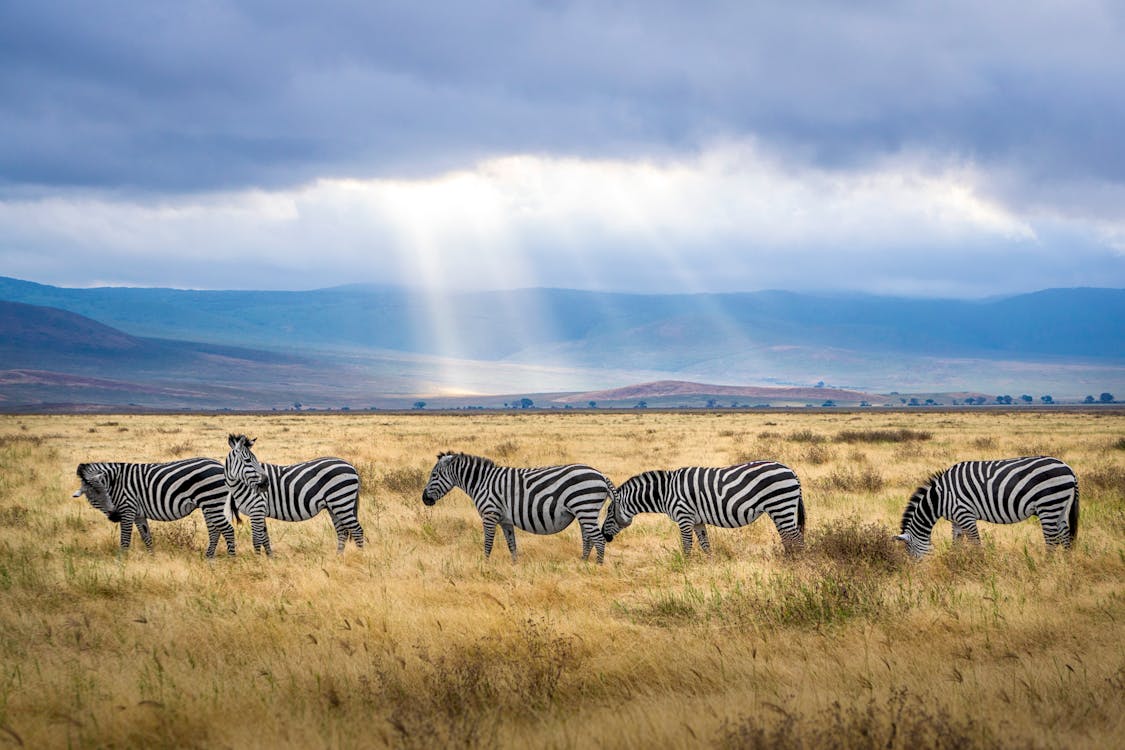
Zebras in Ngorongoro Crater
Ngorongoro Crater is the world’s largest inactive, unbroken, and unfilled volcanic caldera located in one of the most famous cities in Africa, Arusha. The caldera measures between 16 and 19 km (10 and 12 miles ) across and has an area of 264 square km(102 square miles).
Its heavily forested rim rises 610 meters (2,000 feet) above the caldera’s floor to an elevation of 2,286 meters (7,500 feet ). Ngorongoro crater was formed about 2.5 million years ago from a large active volcano. Ngorongoro Crater is also one of the most visited African attractions. It’s located in the Ngorongoro Conservation Area in Tanzania.
There are more than 20,000 large animals living in the crater, large animals such as black rhinos, African buffalo, Hippos, Grant’s Zebra, etc. The crater is also known for its densest population of lions. While you are in the area you can visit the Olduvai Gorge archaeological site, the most important prehistoric site in the world.
It is at Olduvai where remains of Zinjanthropus, the world’s first humans, were discovered by Dr. Louis and Mary Leakey over 50 years ago.
6. Mgahinga Gorilla National Park
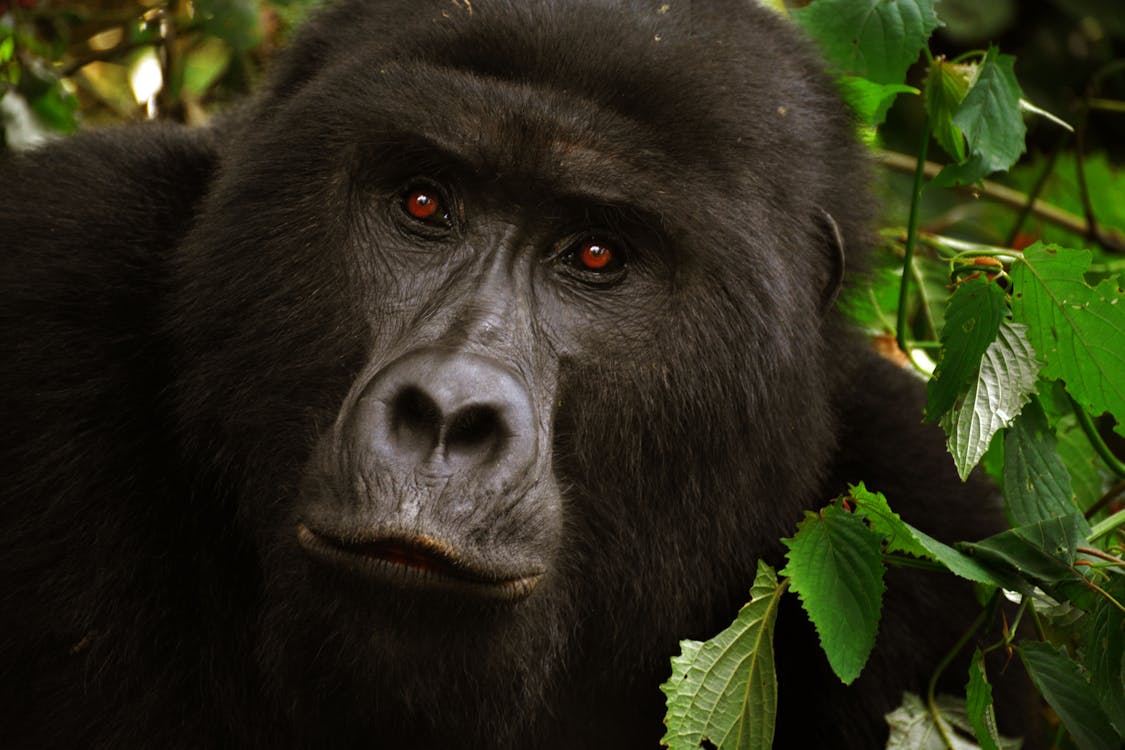
Gorilla in Mgahinga Gorilla National Park
Mgahinga Gorilla National Park is a national park in Uganda, which happens to be one of the cheap places to travel internationally.
It was created in 1991 and covers an area of 33.9 km2 (13.1 sq mi) which makes it Uganda’s smallest national park. The park is famous for its Nyakagezi gorilla family and is part of the larger Virunga Conservation area that spreads over three countries which are Uganda, Rwanda, and the Democratic Republic of Congo.
It also covers the northern slopes of the three northernmost Virunga Volcanoes: Mt. Muhavura, Mt. Gahinga, and Mt. Sabinyo. The Park is bordered to the south by the Volcanoes National Park of Rwanda and to the west by the Virunga National Park of the Democratic Republic of Congo.
So while you are there you might get into two other countries but you have to follow immigration rules and be careful if you consider entering Virunga National Park of the Democratic Republic of Congo because it has been threatened with political conflicts.
There are a lot of things to do and see at Mgahinga National Park. While you are at the park you can see endangered mountain gorillas, Virunga volcanoes golden monkeys, Mount Sabyinyo, Mount Gahinga, Mount Muhavura, etc.
Things that you can do are Gorilla tracking, volcano hacking, Golden monkey tracking, Batwa trail, bird watching, Garama cave exploration, and many more.
7. The Great Pyramid of Giza -Egypt
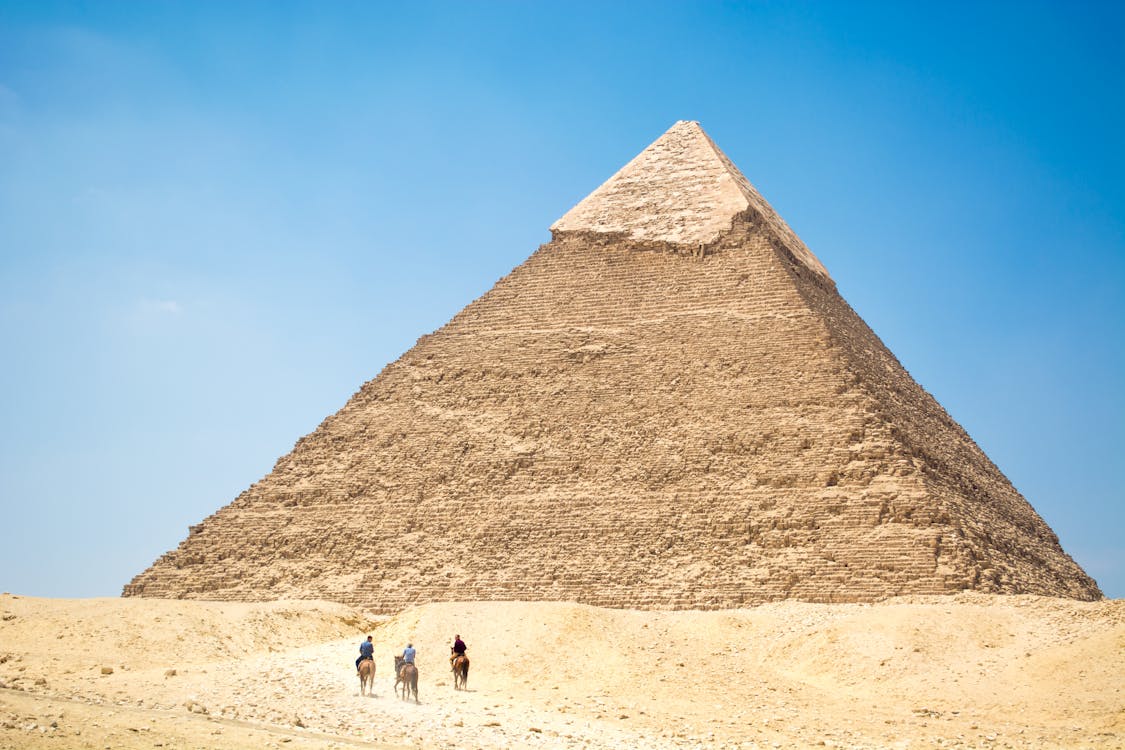
Pyramid of Giza, Egypt
The Great Pyramid of Giza is the last remaining wonder of the ancient world. It’s part of three large pyramids in the Giza Necropolis located in Cairo, Egypt.
According to history, The Great Pyramid of Giza also known as the Great Sphinx of Giza was built for the Fourth Dynasty Pharaoh Khufu or Cheops. The area also contains 3 small pyramids that are believed to have been built for Khufu’s wives.
While you are there you will be able to see the three known chambers inside the Great Pyramid. First is the lowest chamber that has been cut into the bedrock where the pyramid was built and was unfinished.
There’s also a Queen’s Chamber and King’s Chamber which are higher up within the pyramid. Around the pyramid area of the Giza complex two mortuary temples in honor of Khufu. One is close to the pyramid and one is near the Nile River. There is also a guided tour of the pyramids.
A lot of things to see around Giza, Not only pyramids there are also some museums such as the Giza Museum, Solar Boat Museum, Egypt Papyrus Museum, Ramses Wissa Wassef Art Centre, Dr. Ragab’s Pharaonic Village, and many more.
8. Fish River Canyon In Namibia
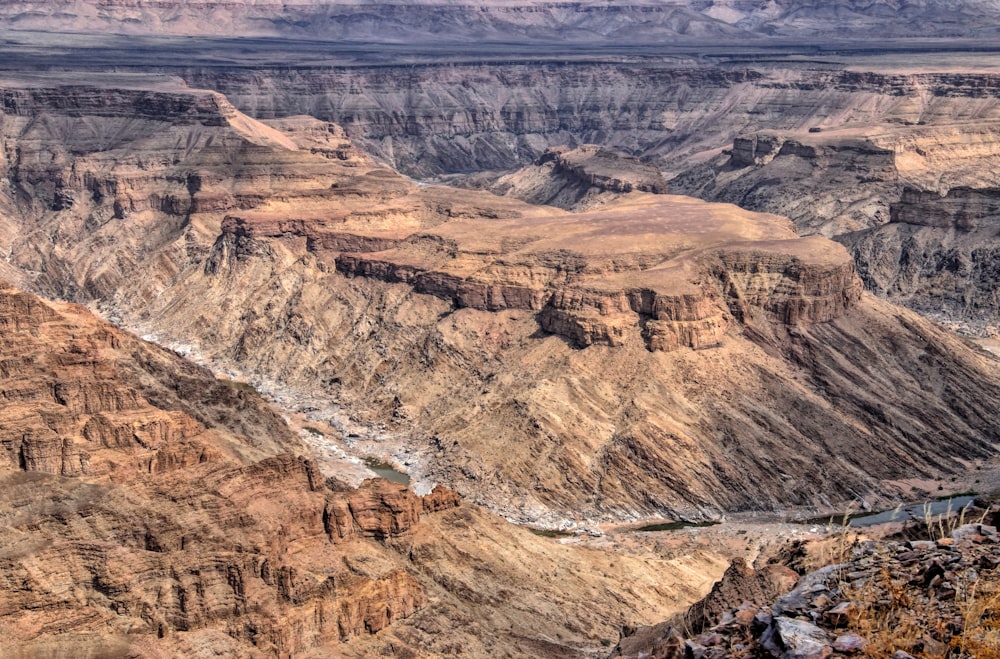
Fish River Canyon, Namibia
The Fish River Canyon is the second largest canyon in the world after the Grand Canyon in the U.S., and the largest canyon in Africa located in Namibia. It’s the second most visited tourist attraction in Namibia.
It features a gigantic ravine, in total about 160km (100 miles) long, up to 27 km (16.77 miles) wide, and in places almost 550 meters(1804 ft) deep. The Fish River is the longest interior river in Namibia.
It flows stronger early in the season and by September usually dries up to form a chain of stagnant pools. The river also flows into the Hardap Dam which is the largest water reservoir of Namibia. Water is safe to drink, however, the use of water-purifying tablets is recommended.
The Canyon forms part of the state-run Ais-Ais Richtersveld Transfrontier Park. The Canyon hike is closed during the summer season(in Namibia) that is November-April due to the heat.
The Fish River Hiking Trail can be done during the months of May- September and can be completed within 4 to 5 days, depending on how feet and fast you are. Another important thing you will need a permit to hike in the Canyon.
9. Mount Kilimanjaro In Tanzania
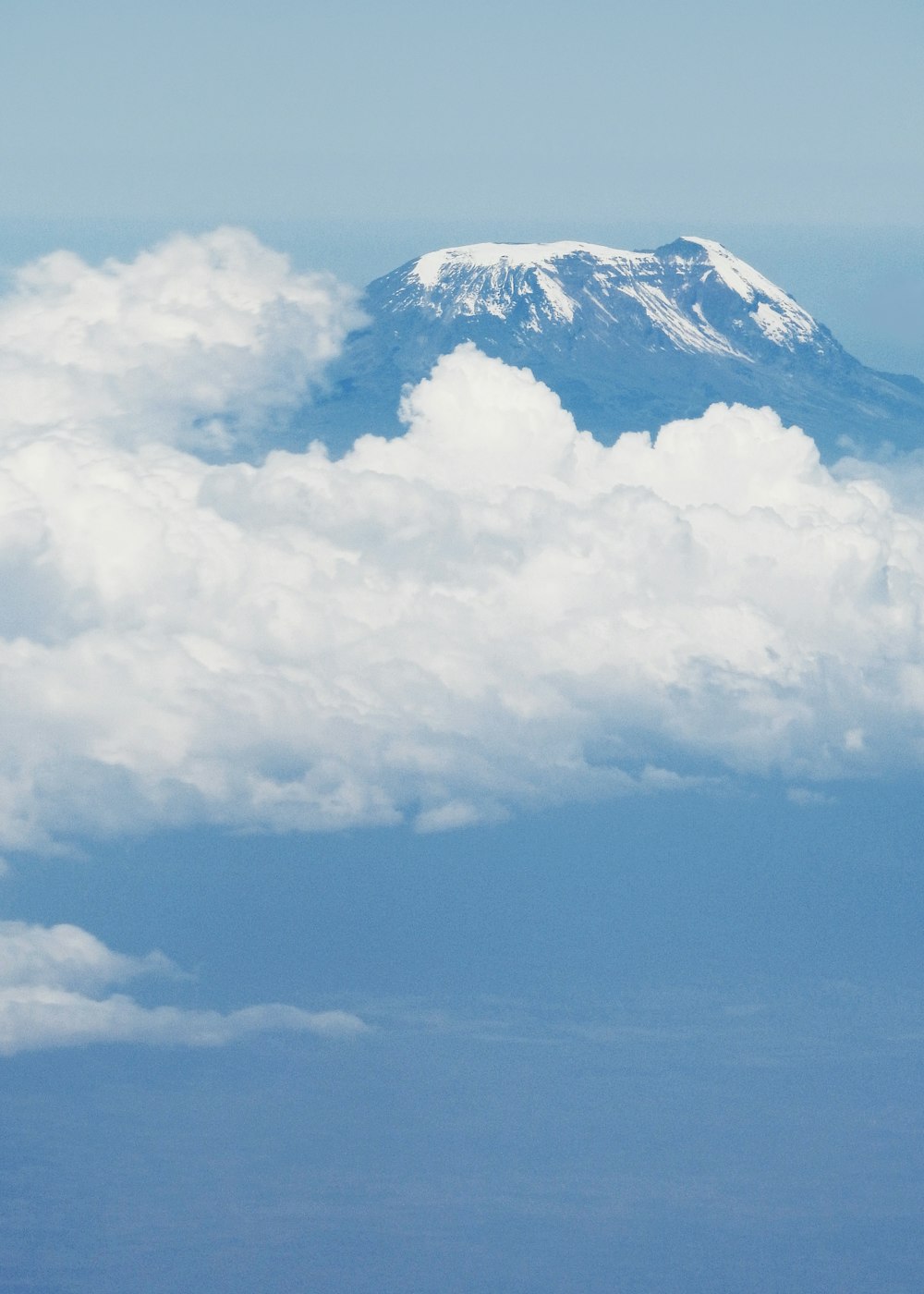
Mount Kilimanjaro, Tanzania
Mount Kilimanjaro is the highest mountain in Africa and the highest single free-standing mountain in the world, with its summit of 5,895 meters (19,341 ft) above sea level and about 4,900 meters (16,100 ft) high from its plateau base.
Kilimanjaro is also the fourth most topographically prominent peak on Earth. Mount Kilimanjaro is located in the Kilimanjaro region, of Tanzania.
Mount Kilimanjaro has three volcanic cones, Mawenzi, Shira, and Kibo. Mawenzi and Shira are extinct but Kibo, the highest peak, is dormant and could erupt again. According to WWF, the most recent activity was about 200 years ago; the last major eruption was 360,000 years ago.
There are a lot of things to do and see on Mount Kilimanjaro. You can hike alone or use hiking tours(this is recommended or the best option) that explore the lower levels of the mountain, around the Shira Plateau areas.
These are not one-day hikes, they are usually three days and require you to sleep in mountain camps. You have to be careful and prepared there’s a lot of steep trails and lots of climbing over rocks and tree roots, as these are not well-maintained smooth trails.
The good thing about hiking it will take you to see amazing craters, giant ferns, wildlife, and plenty of scenic views. Another thing you can visit around Mount Kilimanjaro Park is Chala Crater Lake.
Chala Crater Lake is one of the park’s most famous sights because of its incredible waters, which range in color from turquoise to emerald green depending on the time of the year.
A good place to take photos and create memories. Another thing to do is wildlife watching but this will require you to get an armed park ranger or a tour guide to take you on this trek because there are some dangerous animals such as leopards, buffalos, and other large animals.
A trek will also allow you to see baboons, bush pigs, mongooses, elephants and a number of other animals. Even though the trek is at ground level, you’ll still be higher than sea level, so you might have some trouble breathing and adjusting to the altitude.
Frequently Asked Questions about Best Places to Visit in Africa
- What makes Africa a great destination for tourists?
- Africa is known for its amazing wildlife, expansive landscapes, and rich cultural and educational experiences, making it a top destination for safari lovers and photographers.
Serengeti National Park, Tanzania
- Where is Serengeti National Park located?
- Serengeti National Park is located in Tanzania.
- What is the Serengeti known for?
- The park is famous for the great wildebeest migration, one of the world’s seven natural wonders.
- When is the best time to visit Serengeti National Park?
- The best time to visit is during the dry season from late June to September for optimal wildlife viewing.
Victoria Falls, Zambia/Zimbabwe
- What is special about Victoria Falls?
- Victoria Falls is one of the Seven Natural Wonders of the World, and is the world’s largest sheet of falling water.
- Can I see Victoria Falls from both Zambia and Zimbabwe?
- Yes, but to see the entire length of the waterfall, you will need to have access to both countries.
Spitzkoppe, Namibia
- What are the Spitzkoppe?
- The Spitzkoppe are a group of bald granite peaks located in the Namib desert, Namibia.
- Is Spitzkoppe good for hiking?
- Yes, the area is popular among hikers and rock climbers.
Majorelle Garden, Morocco
- What is Majorelle Garden?
- Majorelle Garden, also known as Jardin Majorelle, is a garden in Marrakech, Morocco, designed by French painter Jacques Majorelle.
Ngorongoro Crater, Tanzania
- What is the Ngorongoro Crater?
- Ngorongoro Crater is the world’s largest inactive, unbroken, and unfilled volcanic caldera, located in Arusha, Tanzania.
Mgahinga Gorilla National Park, Uganda
- What can you do in Mgahinga Gorilla National Park?
- Activities include Gorilla tracking, volcano hiking, Golden monkey tracking, and many more.
Great Pyramid of Giza, Egypt
- What is the significance of the Great Pyramid of Giza?
- It’s the last remaining wonder of the ancient world, located in Cairo, Egypt.
Fish River Canyon, Namibia
- How big is Fish River Canyon?
- It’s the second-largest canyon in the world and the largest in Africa, located in Namibia.
Mount Kilimanjaro, Tanzania
- What is unique about Mount Kilimanjaro?
- It’s the highest mountain in Africa and the highest single free-standing mountain in the world.
- Is Mount Kilimanjaro safe for hiking?
- Yes, but it’s recommended to be with experienced hiking guides for a safer experience.


